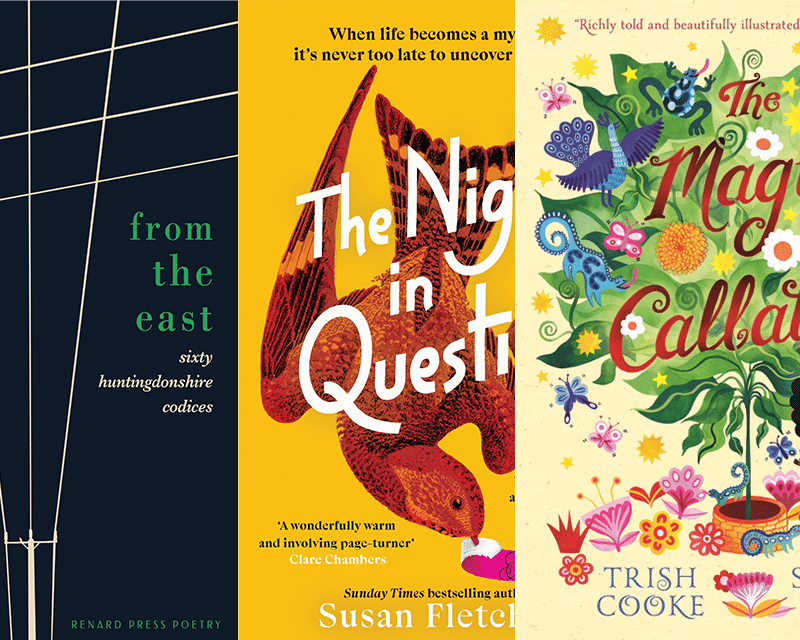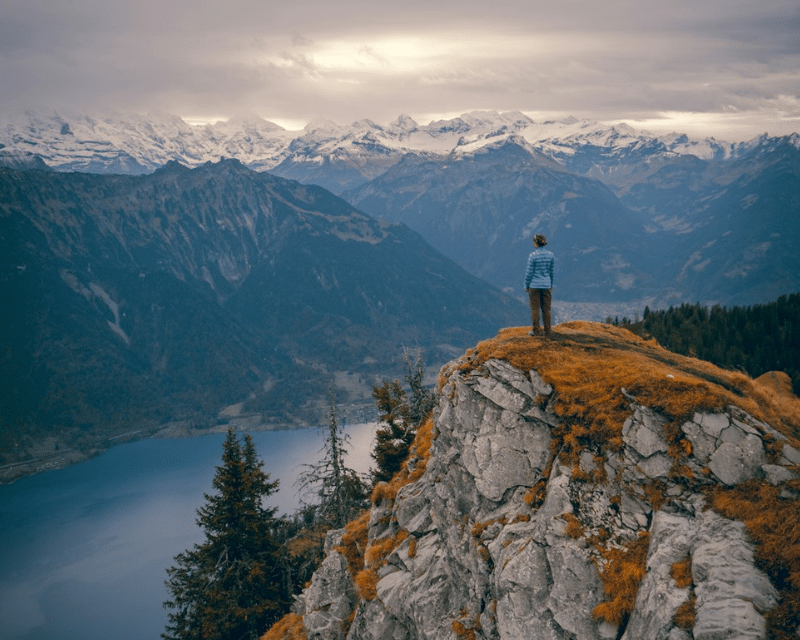- Collected
- Article
A Forest Called Homeland
In the murky spaces between nations there's room for a bit of magic

- 7 September, 2015
- Kapka Kassabova
Many paths led to this forest clearing, and none of them were driveable. Still, people had driven through cliff gorges, along the dug-out drove roads from Ottoman days that derange your car and your digestion. Hunting tracks led off in all directions; if you started walking back you would get lost in minutes. And once you’re lost, with the booming oak trees closing above you, those blind midge-like flies that are a speciality of the border forest come to enter your eyes, nose, and mouth. If you plunge into the river, they wait for you.
Strandja in Bulgarian, Istranca in Turkish, this was Europe’s most mystifying mountain range. Untouched by the Ice Age, it stands as a remnant of a time before Europe and Asia broke apart (as one theory has it) at the Bosphorus Strait, and contains one third of all European animal and plant species. But I had come for the humans.
The forest clearing had several names. In this part of the world where borders had a habit of flickering like spilt mercury over the hills, places often had two names, sometimes three. Greek because Greek speakers lived here, Turkish because this was the Ottoman Empire, and Bulgarian because that’s where we are at this point in linear time. But there are other types of time too, and that’s what drew me here, a sense of unfinished childhood business.
In a feat of metonymy, the forest clearing was known simply as The Homeland — Rodina in Bulgarian, Patrida in Greek. Home to Europe’s only surviving fire-worshipping cult (anastenaria or nestinarstvo), it had seen gatherings of Dionysian revellers, Orphic mystics, and ordinary drunks for about 3,000 years — until the cult of nature was interrupted by the cult of Stalinism. In the aftermath of the Ottoman Empire, Strandja was interrupted by a border between the new nation-states of Bulgaria and Turkey. Then, in 1961, Strandja was lacerated by an electrified barbed wire fence. It cut through villages and gardens — because this was the last outpost of the Iron Curtain, hidden from the eyes of the world among 10,000 square kilometres of native forest. Gatherings in the Homeland, fire-worship, travel abroad and all other suspect forms of enjoyment were prohibited on our side. My generation had grown up in Bulgaria in the last blink of that prohibition.
Even though the beaches of the southern Black Sea were only a half hour’s drive from here, and some of my childhood had been spent on those beaches, this was my first visit to the formerly militarised zone in Strandja, known as the Furrow of Death — because in the no man’s land between the barbed wire and the actual physical river-border, there was a furrow so smooth that even a bird couldn’t cross it without being seen, and shot. In my childhood, even the word ‘border’ had a deadly ring to it. To visit these lush, barely penetrable mangrove border forests, you needed a special permit from the Ministry of Internal Affairs. In other words, you couldn’t visit. Even the locals needed special permits to visit each other and those allotments that fell within the barbed perimeter.
Almost thirty years had passed since my last Black Sea holiday, a lifetime of living elsewhere. So much of my own country had been out of bounds, all the towns, villages, mountains and rivers within ten kilometres of the border zone, that Strandja felt like a foreign place. I was from here, but I had never been here, to Europe’s last terra incognita.
A paradox. This land between the Black Sea, the Sea of Marmara and the Aegean, still known as Thrace, is the oldest inhabited place on the continent. In antiquity it was the empire of the Thracians, ancient Greece’s northern neighbours, famous at the time for crafted gold, wine-making (and imbibing), and bloody solar-chthonic cults. Today shared by Bulgaria, Greece, and Turkey, Thrace was a buffer zone during a half-century of Cold War. No wonder it crackles with an over-accumulation of memory.
‘A journey through Bulgaria is marked at each turn by the catacombs of disappeared peoples and eras,’ wrote the nineteenth-century ethnographer Felix Kanitz, and this is true of the whole region. Among the forest-concealed Thracian dolmens and sanctuaries, a new category of catacomb has appeared, the ruins of the Soviet experiment: disused co-operatives, gutted border army barracks, stretches of barbed wire, and phantom villages on both sides of the border. In a village called Moryane, which is not on the map anymore, an old man was the last one standing after the Communist regime exiled the villagers and moved in its army: his job had been to turn on the lights in empty houses so the enemy on the other side would think someone was there.
But the enemy on the other side was exiled from its own villages by its own army, that of the Turkish military juntas of the 1960s and then 80s. This was everyday Cold War: bored soldiers aiming their guns at each other across the hills for 50 years.
Back in the forest clearing, five giant cauldrons of lamb soup had been bubbling on small fires since morning. Old women with moustaches presided over them, while people brought icons and placed them on five wooden platforms, one for each of the five fire-walking villages along the border. Empty, the platforms looked like execution stands, but now they were animated by the faces of saints that looked too human to be saintly. The old women had carried them propped on their laps, facing out, like children. The icons came ‘dressed’ in lace, and after the procession down to the river where they were undressed and washed (without water touching them, because some of them were three centuries old), they were dressed again and placed on the platforms, together with festive breads, candles, coins for luck, and the burning incense of Orthodoxy that couldn’t conceal the distinct whiff of paganism.
It was the day of Saints Constantine and Elena. Greeks had come across the border with their own icons, on an annual pilgrimage now made bi-annual by the Greek crisis. The journey to our ancestors’ birthplace turned out to be the done thing here, a summer activity for people on all sides of this triple border, whose grandparents had been displaced in the wake of the Balkan Wars of 1912–1913.
In short, I wasn’t the only one attempting some kind of return. The Greeks had travelled all the way from Thessaloniki. Some were wiping tears as they washed their icons in the river. Parents or grandparents had been expelled from their homeland here, after centuries of attachment to Strandja and its fertile alluvial land, its fire rites, its storks that darkened the sky come September, following the Via Pontica all the way to Africa.
‘You’ll notice’, someone said to me, ‘that a different time operates here.’
It was a woman with a tobaccoey complexion. Maria was an ethnographer from a border town.
‘Some call it the time of eternal return. You mustn’t take anything at face value. For example, Constantine and Elena are just the Christian embodiment of the great Mother Goddess and her son the Sun God.’
I must have looked the way I felt, because she smiled and added: ‘The solar and the chthonic cults of the Thracians. Fire and earth. Day and night. Life and death. Fig-leaved by Christianity. Don’t worry, you’ll get it if you hang around.’
Would I hang around? That was two years ago, the beginning of a wild border journey that isn’t over. Perhaps it never will be.
The ‘eternal return’ was coined by the philosopher Mircea Eliade, to describe the human belief that in performing certain rituals in certain places on earth, you can reconnect with a mythical dimension outside linear time, the material world, and your self. ‘Ecstasy’: a Greek word meaning ‘outside the self’. The desire for eternal return is our desire for the cosmic.
Maria pointed out the two young fire-walkers. Sitting apart, they looked pale and clammy, only drinking water. The air was tense with the unspoken question: will they be ‘seized’ with the fire lust that has ecstatically afflicted certain people of the border villages since long before there was a border? Or won’t they? By midday, the orgiastic vibe was already in the air.
People had finished bathing the icons and I saw now that the token religious gesture of the icons held a meaning beyond faith or revelry — there was something else that electrified. I could sense it but couldn’t name it yet. It was something to do with the vastness of the forest and the proximity of the border. Something fairytale-like, because every ritual performs an act of magic, and magic is out of time. And because once upon a time it was all forest and there were no borders.
The forest is where we revert to a natural state of anarchy and animalism, childhood and magic. It is also a place of secrets and metamorphoses, of ambiguity and buried things, the archetypal home of the Jungian subconscious.
I asked Maria about the fire worshippers and she told me this: in antiquity, a stag came to this spot each year and cleared the mountain spring up the hill where people now queued up with bottles, because the water was believed to be curative.
He cleaned it with his antlers until the water flowed. Then, to ensure the new season could begin, he offered himself for slaughter for the sacrificial kurban soup now bubbling in the cauldrons (qurbân, from which it derives, is an Arabic word, and the rite is widely practiced in Greece and Bulgaria). He did this every year, which is why you never shoot a stag in this forest, in case it’s the divine, gold-horned one who, from the Bronze Age onwards, runs towards the sun of a new cycle, and whose earthly embodiment is fire, Maria said. What is interesting about this stag is not only that he is an avatar of the Sun God, but that he is both hunter and hunted.
‘And because of that,’ Maria said, ‘the fire worshippers of each generation come to this spot to commune with fire and cleanse themselves. They do it for the rest of us too. The Soviets arrested the forest with their barbed wire but what is half a century? A blink.’
That night, as the sun went down and the forest became infected with ghosts, the chthonic phase of the ritual began. I watched the two guys, shuddering, cold-skinned as reptiles, enter the red embers with their bare feet to the primitive, yearning, lustful beats of drum and bagpipe, the kind of music that makes you feel as if your aching body has never left the forest. They held the icons with too-human faces turned outwards, like children, and moved as if in a trance.
I remember feeling like I was lifted up and carried somewhere, without moving at all from my table, and I remember Maria’s face, lit up by the fire, looking up at the spectral night sky and saying, ‘look out for the ball of fire.’ The ball of fire which passed over the Strandja at the start of summer, and turned into a dragon if it hit the ground — that ball of fire!
According to an archaeologist from the Communist era – an era paradoxically steeped in superstition and mysticism, as if in an unconscious attempt to balance the drab dictums of dialectical materialism – Strandja is one of the Earth’s places where you can step into the time of eternal return. At your own risk, of course, as many since have found out. Though that’s another strange Strandja story.
You might also like:
No facts, only versions
Memoirs are as much about what is excluded as what is included. This edition examines how you can evoke the…
RLF Fellows’ News: April 2024
Publishing News RLF Fellow Trish Cooke’s new children’s book, The Magic Callaloo, is set to be published by Walker Books…
Susan Fletcher on outsiders in fiction – literal and imagined
I’ve always known that I’ve preferred to be outside. To be an outsider – literally, and, specifically, amongst wild places…


